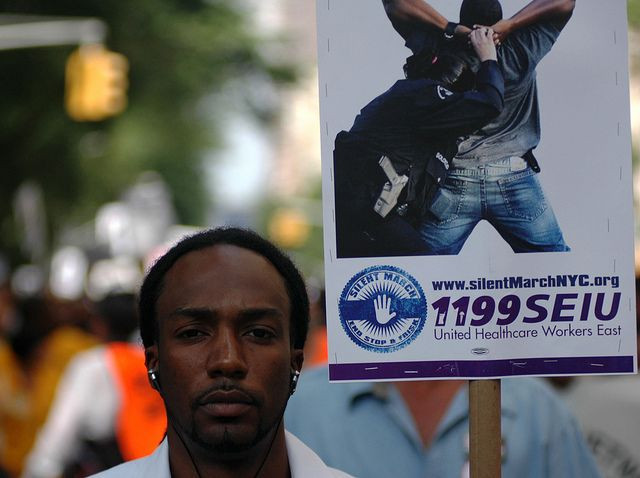NYPD's Stop-And-Frisk Heightens Anxiety, Psychological Trauma In Those Stopped; Thankfully, That Era Is Coming To An End

Police, it seems, have been overstepping the boundaries between law enforcement and brutality excessively this year, from the shooting of Michael Brown in Ferguson, Mo., to the choking death of asthmatic Eric Garner in Staten Island, N.Y. Incidents like these have overshadowed other common police tactics, and for obvious reasons, but that doesn’t mean the other tactics aren’t equally wrong. One of those tactics, known as stop, question, and frisk, was highly controversial, and a new study now finds that it may have heightened anxiety and other psychological problems in those it targeted.
More commonly known simply as stop-and-frisk, it was a mainstay of the New York City Police Department for nearly a decade, occurring over five million times. As its name implies, it involved stopping residents of a neighborhood for “suspicious” behavior, questioning them, and frisking them for drugs, weapons, or other criminal possessions. However, those neighborhoods tended to be ones populated by mostly blacks and Latinos — central Brooklyn, Harlem, and the west Bronx — and questioning and frisking was often reported as violating one’s rights and aggressive. (You can, and should, get a better idea of what stop-and-frisk was like by watching these two videos.)
The new study, from researchers at Columbia University, found that stopped-and-frisked New Yorkers had a higher chance of anxiety problems and post-traumatic stress disorder, among other psychological traumas, if they were stopped more than once and if the encounter was more intrusive. Their perception of the stop-and-frisk also contributed to their mental health outcomes.
The findings put into question how effective a tactic like this is. How do we balance reducing crime in neighborhoods where it’s most likely to occur without compromising mental health? “Our findings suggest that any benefits achieved by aggressive, proactive policing tactics may be offset by serious costs to individual and community health,” the researchers wrote, according to the Associated Press. “Less invasive tactics are needed for suspects who may display mental health symptoms, and to reduce any psychological harm to individuals stopped.”
Columbia law professor Jeffrey Fagan and sociologist Amanda Geller (now at New York University) conducted the study on 1,261 New Yorkers aged 18 to 26 living in 37 neighborhoods throughout the five boroughs. The majority of neighborhoods were the setting of frequent stop-and-frisk incidents, and the majority of participants were either black or Latino. They were questioned about the amount of times they were stopped, what happened during the encounters, any trauma they could attribute to the stops, and any resulting anxiety they experience — some reported anxiety simply from looking at the clock and seeing it was the same time of day they were stopped.
Stop-and-frisk has almost been eliminated from the streets of New York, according to The New York Times. They peaked in Jan. 2012, with over 16,000 per week, and subsequently began to drop. This decrease can be partially attributed to the number of civil rights groups, including the New York Civil Liberties Union, that got involved in protests. It wasn’t until mid-2013 that a federal judge ruled the stops were somewhat discriminatory, and that they would need reform. Instead of reform, however, it seems the police department is doing away with the practice to some extent — most likely because Mayor Bill DeBlasio is against it, whereas former Mayor Michael Bloomberg encouraged it. Or, maybe it’s because nine out of 10 people stopped were actually innocent.
Source: Geller A, Fagan J, Tyler T, Link B. Aggressive Policing and the Mental Health of Young Urban Men. American Journal of Public Health. 2014.



























